Rishi Agastya
Nov 12, 2019 • 462 views
Rishi Agastya was a vedic rishi. He is believed to be the elder brother of Rishi Vashishtha. Rishi Agastya was born in Kashi and was considered as one of the seven rishis or the saptarishi. His father was Rishi Pulastya, who was the son of lord Brahma. Rishi Agastya also served as the rajguru of King Dasharatha.
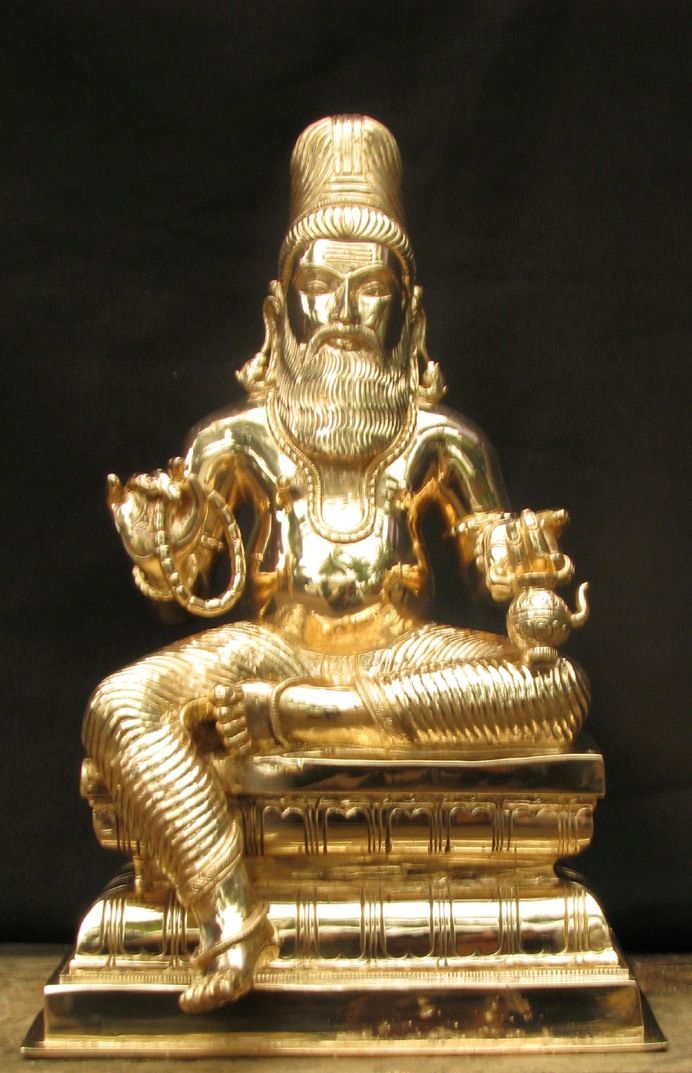
source:- en.wikipedia.org
Rishi Agastya’s wife
Rishi Agastya was a very disciplined sage. He married nearly in his old age. He was married to vradha princess Lopamudra, who was a very pretty lady and possessed great knowledge of science. Lopamudra was blessed by lord Vishnu that after her marriage, a time will come when she will transform herself into a river and will quench the dry lands of deccan. When Rishi Agastya visited vradha kingdom to seek permission of Lopamudra’s parents for their marriage, her parents were upset on the fact that it would be difficult for their daughter to sustain as a wife of a hermit who has no facility or luxury with him. But Lopamudra was a very pure hearted woman. She accepted Rishi Agastya’s proposal of marriage. It is believed in some legends that Rishi Agastya created Lopamudra from the most beautiful parts of different animals and plants species for the purpose of marrying her later and handed her over to vradha king to rear the infant.
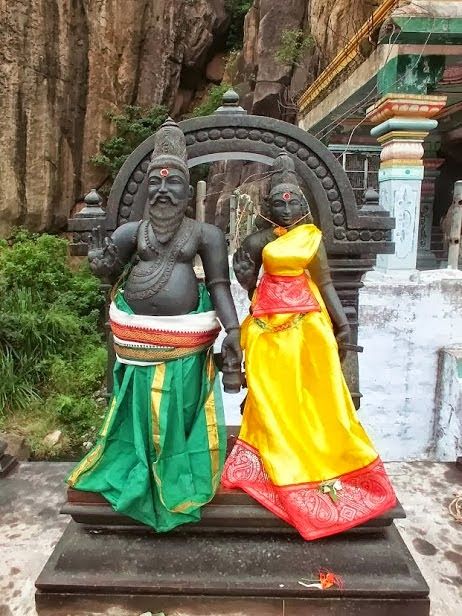
source:- omsrilalitha.blogspot.in
Eventually, after his marriage, lord Shiva and the other gods requested Agastya to leave kashi and proceed to south for resolving problems of the people. It was during their journey that Agastya Rishi saw Vindhyachal mountain growing bigger every subsequent day. Vindhyachal, even after seeing Rishi Agastya did not feel the need to offer his salutations to the hermit. This raged Rishi Agastya cursed Vindhyachal to get reduced in its size and will continue to reduce its size every day.
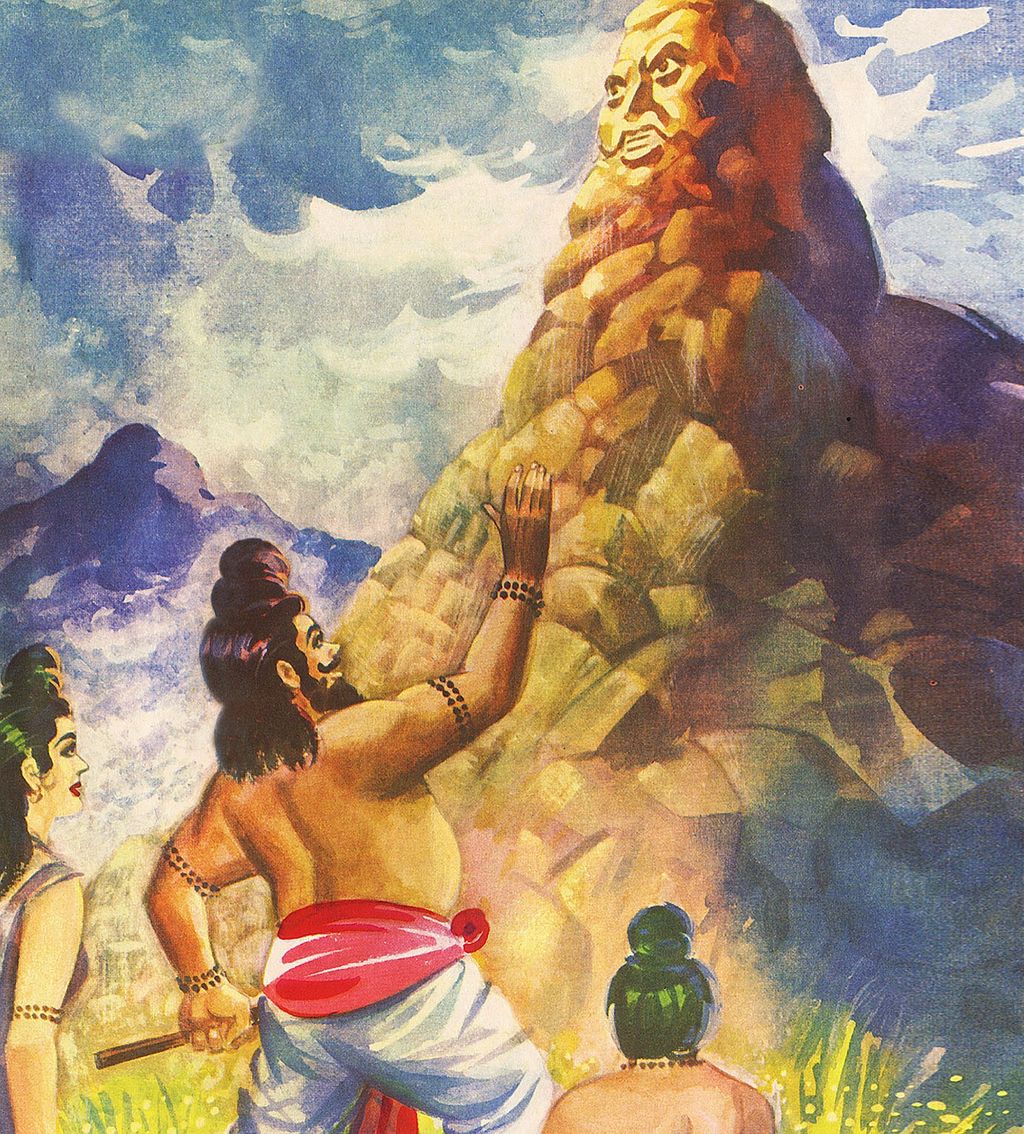
source:- roundtheclockstories.blogspot.com
The couple settled somewhere in the forests of south. Time passes by and Rishi Agastya and Lopamudra became familiar with each other and gradually developed feelings of love for each other. However, the time was nearing when Lopamudra had to transform herself. The day finally arrived. One morning as Lopamudra was greeting her husband, her body began to lose its solid form and convert into water. Rishi Agastya could not let go of her wife so easily, so he collected Lopamudra’s liquid form into his kamandala without spilling even a single drop.
Rishi Agastya and Ganesha
Since the water was inside Agastya’s kamandala, the purpose of Lopamudra’s transformation was yet to be fulfilled and southern India was yet to be relieved from its barren state. The water has to be released from his kamandala. This task was achieved by lord Ganesha. One day while Rishi Agastya was doing meditation, his kamandala was kept aside, suddenly, lord Ganesha, transformed into a crow, came near the sage and perched over his kamadala. After a few attempts, the crow succeeded in tilting the kamandala and releasing out all the water out of it. Seeing her wife flow out of his kamandala, Rishi Agastya got really angry and was about to curse the crow when it transformed back to lord Ganesha. Upon seeing Ganesha, Rishi Agastya offered him his salutations. Ganesha explained Rishi Agastya about Lopamudra’s vardan given to her by lord Vishnu and the importance of releasing her. Lopamudra in her watery form quenched the barren southern india and was called by the name of river kaveri (cauvery).
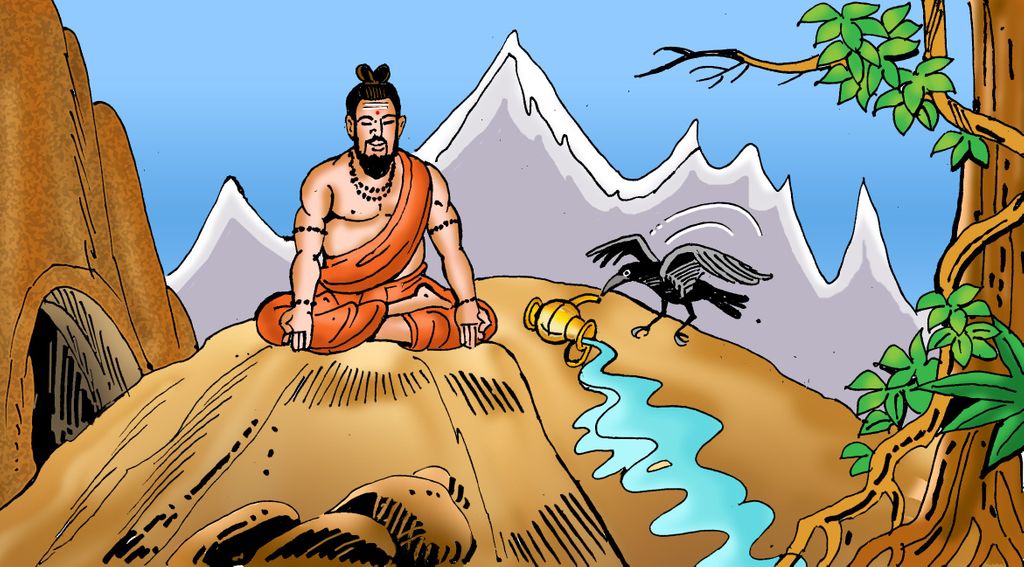
source:- kathakids.com
Rishi Agastya and Atapi Vatapi
Once Rishi Agastya was moving across the village when he encountered Vatapi, a demon disguised as a human. Vatapi along with his brother Atapi fool people to visit their palace for lunch/snacks. Once a person agrees to it and visits the palace, Atapi offers the individual food to eat, in which Vatapi is hidden in a shrunken size. Once Vatapi enters the stomach of that person, he comes out forcefully, tearing the abdomen of the individual. Later when the person dies, the demon duo feeds on him and satisfy their appetite. Something similar was in mind of Vatapi when he met Agastya Rishi, however he was unknown by the fact the Rishi Agastya knew his reality and has broken his disguise. Rishi Agastya agreed to Vatapi’s request and visited the palace. Atapi welcomed the rishi and offered him food in which Vatapi was hidden. However, immediately after finishing his meal, Agastya Rishi rubbed his palm over his abdomen and using his magical powers, trapped Vatapi into his stomach and eventually dissolved him with the gastric juices. When for long, Vatapi did not come out, Atapi got worried for his brother and questioned Rishi Agastya to which the rishi replied that he has digested Vatapi. Atapi got infuriated and was about to kill Rishi Agastya, just when Rishi Agastya chanted mantra and bhasm Atapi.
Agastya as an author to various texts
Agastya is the named author of several hymns of the Rigveda (1500-1200 BCE). Agastya is mentioned in all the four Vedas of Hinduism, and is a character in the Brahmanas, Aranyakas, Upanishads, epics, and many Puranas. He is the author of hymns 1.165 to 1.191 of the Rigveda (~1200 BCE). He ran a Vedic school (gurukul), as evidenced by hymn 1.179 of the Rigveda which credits its author to be his wife Lopamudra and his students.He was a respected sage in the Vedic era, as many other hymns of the Rigveda composed by other sages refer to Agastya. The hymns composed by Agastya are known for verbal play and similes, puzzles and puns, and striking imagery embedded within his spiritual message. Agastya is attributed to be the author of Agastimata, a pre-10th century treatise about gems and diamonds, with chapters on the origins, qualities, testing and making jewellery from them. Several other Sanskrit texts on gems and lapidary are also credited to Agastya in the Indian traditions.
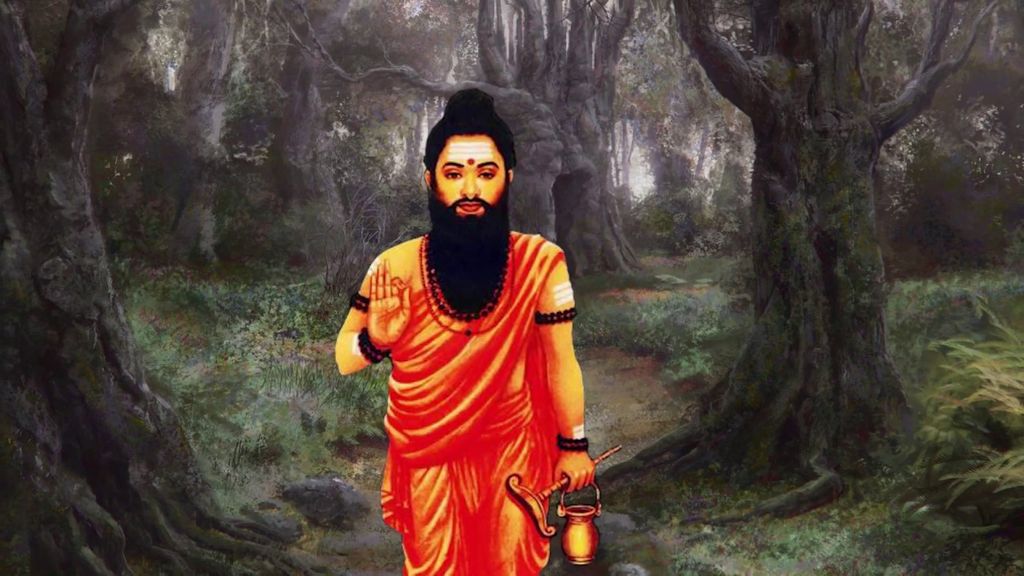
source:- youtube.com
